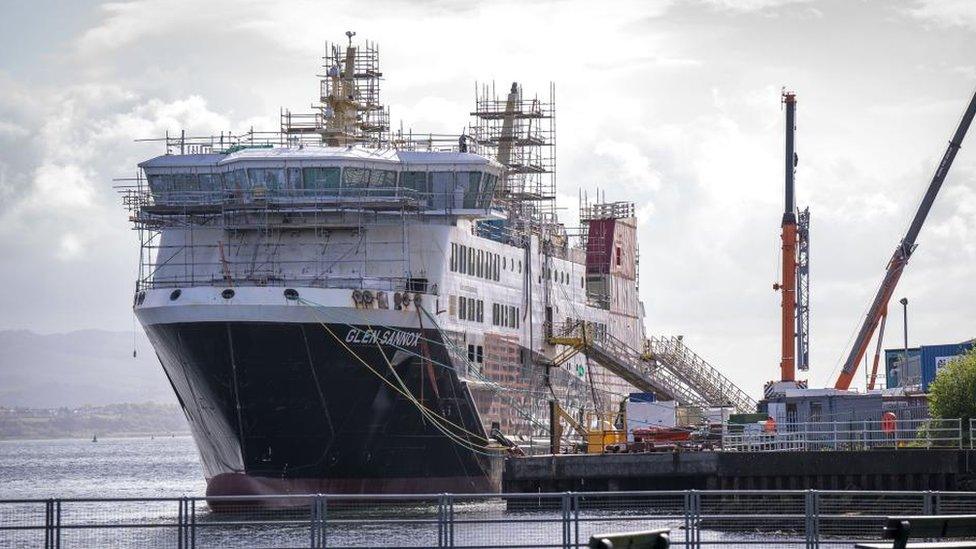Ferguson ferry design 'more complex' than warships
- Published
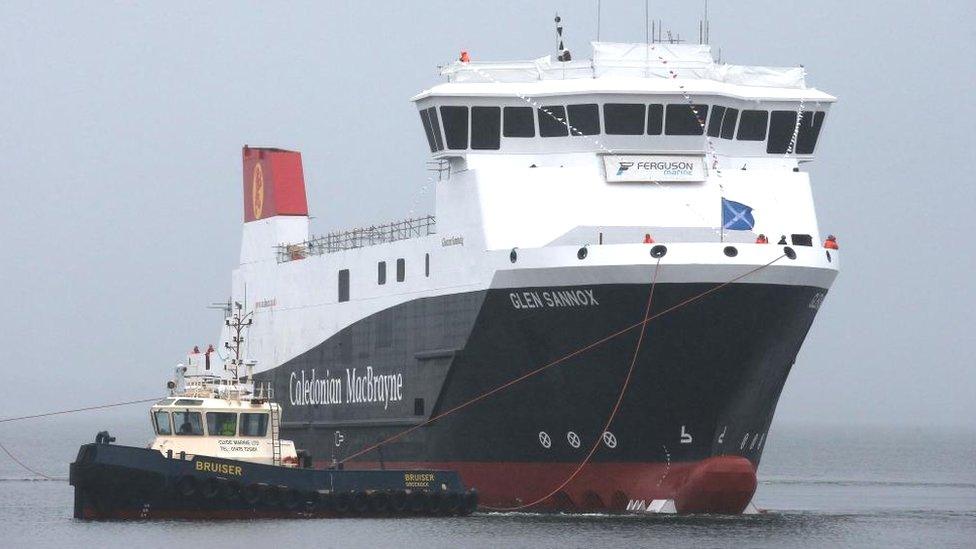
The design of the two long-delayed ferries being built on the Clyde has proved more complex than the Navy's latest warships, MSPs have been told.
The project at Ferguson Marine has run years late and is more than three-and-a-half times over its original budget.
Chief executive David Tydeman accepted that "lots of mistakes" and "simple errors" were made during construction.
And he said squeezing components into the ferries was more challenging than the design of the new Type 26 frigates.
Mr Tydeman said "steady progress" was being made on the project, and that there was an "opportunity" to stay within the latest requested budget.
The Ferguson yard won the contract for the ferries in 2015, with the aim of building both ships for £97m.
However, costs spiralled amid a series of delays, and the yard fell into administration and was nationalised in 2019.
The final cost of the first ship - Glen Sannox - will be around £200m, while the second - Glen Rosa - will be around £160m.
Mr Tydeman, who took over as chief executive in March 2022, told Holyrood's net zero committee that he believed the ships would be worth around £70m each once complete.
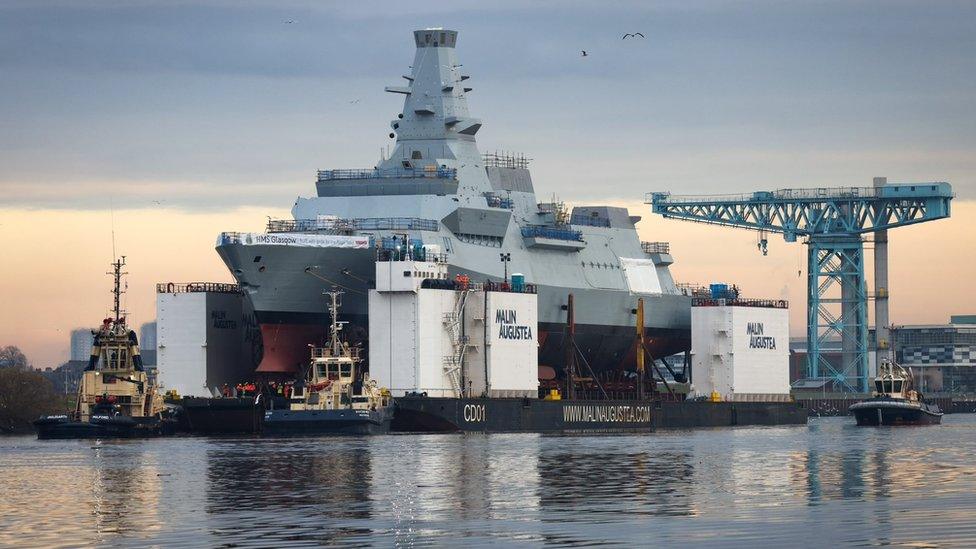
HMS Glasgow being floated down the River Clyde
The ferries are to use a dual-fuel system, with the ability to switch between marine diesel and liquefied natural gas (LNG).
The specification for the vessels was drawn up by government-owned ferries agency CMAL, in conjunction with ferry operator CalMac.
Mr Tydeman said the LNG equipment took up valuable space and fitting the components needed around the vessel's car deck made the design very challenging.
And he said it became clear to him within months of starting in the job that "the design was incomplete".
He said: "While the equipment on board Glen Sannox is not complex in its own right, the vessel is made complex by the need to fit a lot of systems and major components into restricted spaces.
"In this sense, the two ferries are far more complex than the Loch Seaforth, the largest vessel in the current fleet, and more complex than the four ferries being built in Turkey for CMAL.
"The design challenges have been very substantial - more complex than the Type 26 according to senior industry visitors I've had on site, and have been made far more difficult by the changes in designers and staff through the recovery from administration, nationalisation and the pandemic."
The Port Glasgow yard is also working on some parts for the Type 26 frigates - billion-pound warships designed for anti-submarine and anti-air operations, which are being built on the Clyde by BAE Systems.

The second ferry Glen Rosa, until recently known only as Hull 802, is still on the slipway
After the Ferguson shipyard went into administration in 2019 and was nationalised, the government-appointed "turnaround director" Tim Hair changed design contractor, employing a new firm which is based in Romania.
Mr Tydeman said 20,000 technical drawings had been sent to Fergusons during 2020, at a point in lockdown when there were no staff at the yard to check them - something he said "seems unwise".
Changes to the design have continued into this year, amid a row with the Maritime and Coastguard Agency (MCA) about safe evacuation routes for passengers.
Mr Tydeman told MSPs that he had hoped the designs would be signed off after meetings with local MCA surveyors, but accepted that "we were perhaps overconfident" that exemptions would be granted.
He said it was "a bit of a surprise" that the regulator demanded changes, in line with rules the body says have been in force since 2009.
New stairwells are being installed in the ships and new doors will be fitted during sea trials, with the passenger capacity being cut from nearly 1,000 to 852.
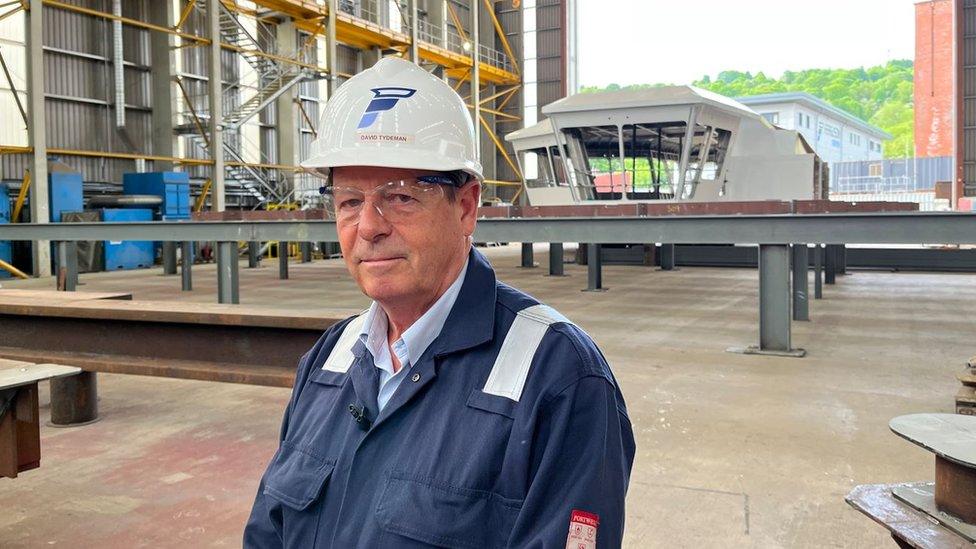
David Tydeman took over as chief executive at the yard in March 2022
Mr Tydeman also said "lots of mistakes" had been made during construction, such as the wrong kind of steel being used in pipework around the entry ramp on the Glen Sannox.
He said this was a "simple error", but just one example where work had to be redone two or even three times.
However, he said issues with the design had the biggest impact on the overruns in time and cost.
He said: "It doesn't matter whether you're putting a new kitchen in your house, or building a building like [the Scottish Parliament], if you know what you're asking the contractors to do on day one then you get a clearer price and programme.
"With a complex vessel like this having a lot of uncertainty in the design, it led to mistakes, to rework and to increased costs. There's no doubt in my mind that the design was not robust enough when steelwork was started a long time ago."
The Glen Sannox is meant to begin sea trials in early 2024, with the aim of being handed over to CalMac by the end of March.
The Glen Rosa is due to follow in 2025, although Mr Tydeman said any issues flagged up during trials of the Glen Sannox could have a "cascade effect" on completion of the second ship.
He said there was still some uncertainty about the timetable, but said he was more confident in the budget having now established a "sense of control" over the scope of the project.
He said work on the Type 26 components had provided work for 30 staff at the yard, and was "an important aspect in securing staff morale on site, essential for maintaining the productivity we need for Glen Rosa and Glen Sannox".
The shipyard is awaiting a decision on Scottish government funding for a new plating line which Mr Tydeman said was essential for raising productivity so it could put in competitive tenders for future orders.
Related topics
- Published29 September 2023
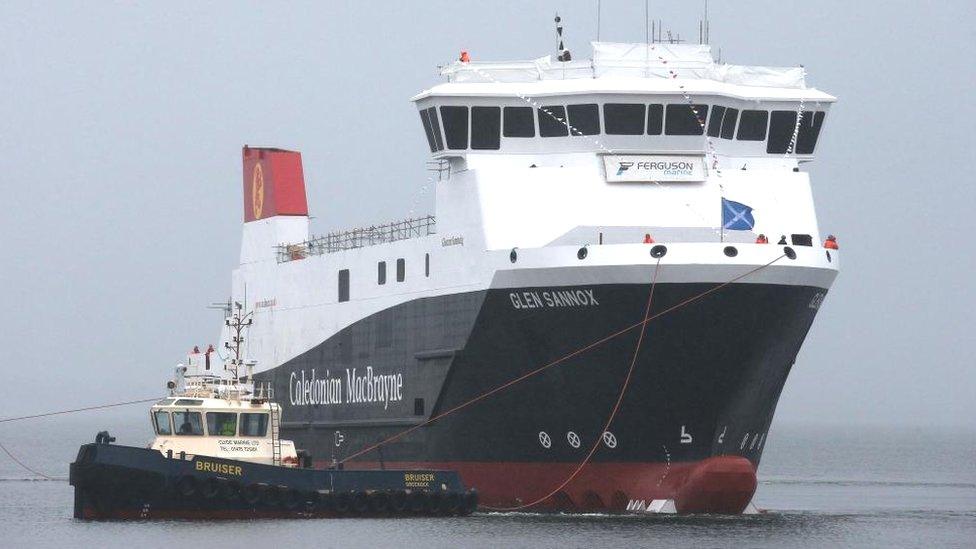
- Published18 October 2023
